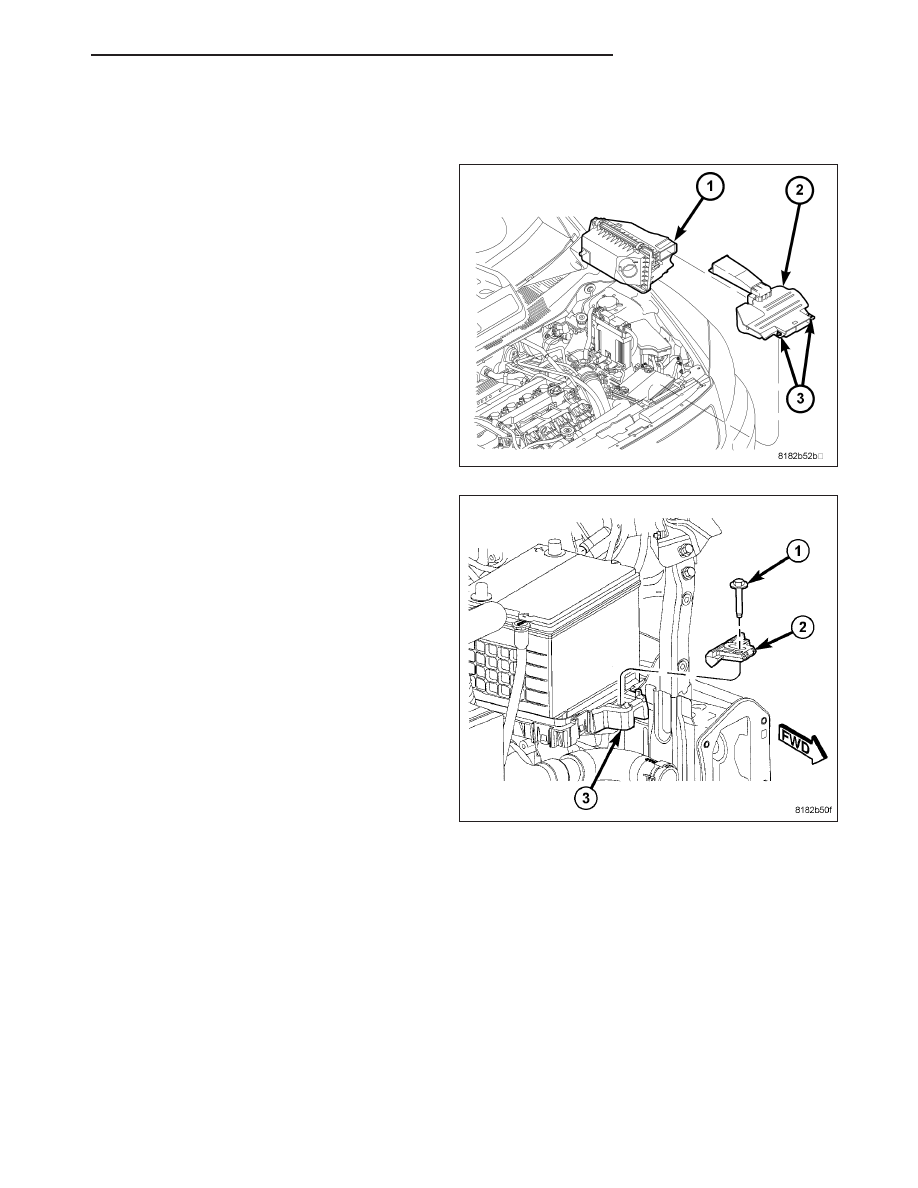Dodge Caliber. Manual - part 279

BATTERY HOLDDOWN
REMOVAL
1. Disconnect and isolate the battery negative cable.
2. Rotate the two retaining clips (3) and remove the
air cleaner fresh air duct (2).
3. Remove the battery hold down retaining bolt (1).
4. Remove the battery hold down (2) from the vehicle.
PM
BATTERY SYSTEM
8F - 21